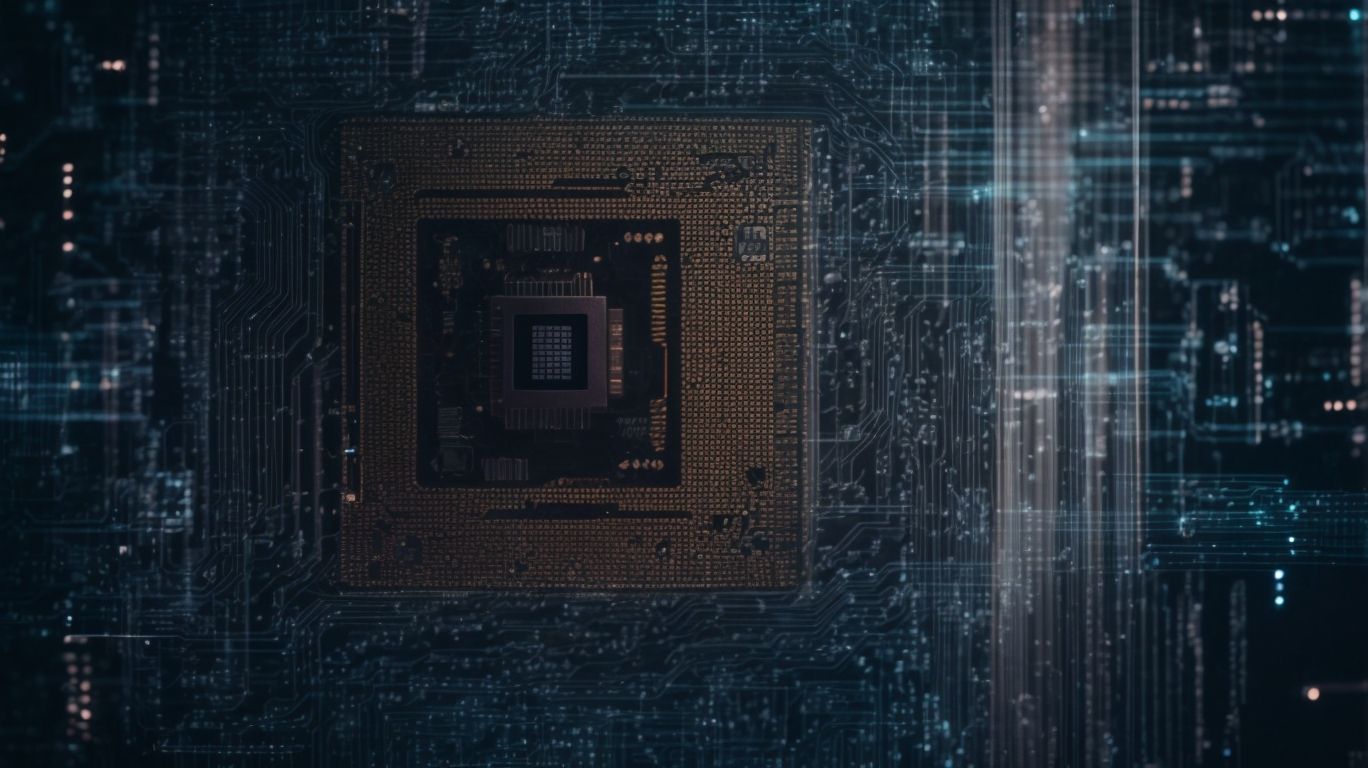Cybersecurity is more important now than ever before, as technology continues to advance and cyber threats become increasingly sophisticated.
Here, we will explore the current trends in cybersecurity, including the rise of cyber attacks, increased use of artificial intelligence, and the growth of Internet of Things (IoT).
We will also discuss predictions for the future of cybersecurity, such as more sophisticated cyber attacks and greater adoption of cloud security.
Addressing the challenges and steps to improve cybersecurity in the evolving landscape of technology.
Table of Contents
Key Takeaways:
The rise of cyber attacks, increased use of AI, and growth of IoT highlight the need for stronger cybersecurity measures.Predictions for the future include more sophisticated attacks, increased cloud security, and a focus on cybersecurity in politics.Challenges include a shortage of skilled professionals and balancing convenience with security, while steps to improve include education, updates, strong passwords, and multi-factor authentication.
The Importance of Cybersecurity
In the digital age, cybersecurity plays a crucial role in safeguarding organizations from evolving threats posed by cybercriminals.
Cybersecurity is not just about implementing basic security measures; it involves creating a multi-layered defense system to protect against a wide range of potential risks. With the increasing sophistication of cyber threats, organizations must adopt advanced security strategies such as real-time monitoring, threat intelligence, encryption, and access controls to mitigate the risks effectively. A proactive approach to cybersecurity is essential in today’s digital landscape to prevent data breaches, financial losses, reputational damage, and other detrimental consequences that can impact an organization’s operations and credibility.
Current Trends in Cybersecurity
Current trends in cybersecurity reflect a growing reliance on artificial intelligence and advanced technologies to combat the sophisticated tactics employed by malicious actors.
One key area where AI is making significant strides in cybersecurity is in threat detection and response. Machine learning algorithms are being used to analyze vast amounts of data to identify patterns and anomalies that may indicate a potential security threat. This proactive approach allows organizations to detect and respond to threats more quickly, reducing the impact of cyber attacks.
The integration of AI with security tools such as intrusion detection systems and firewalls is enhancing the effectiveness of these defenses. By automating routine security tasks and providing real-time analysis of network traffic, AI-powered solutions can help organizations identify and mitigate threats in real-time.
Rise of Cyber Attacks
The rise of cyber attacks continues to pose significant challenges for cybersecurity professionals as new and evolving threats emerge from cyber adversaries.
In recent years, cyber adversaries have become more sophisticated in their tactics, utilizing advanced techniques such as social engineering, ransomware, and zero-day exploits to infiltrate networks and compromise sensitive data. Organizations across various industries are facing a growing number of targeted attacks that exploit vulnerabilities in their systems, highlighting the importance of robust cybersecurity defenses and proactive threat intelligence.
The proliferation of connected devices and cloud-based services has expanded the attack surface, making it easier for malicious actors to launch large-scale cyber attacks with widespread impact. Collaborative efforts within the cybersecurity community, such as information sharing and coordinated incident response, are essential in combating these evolving threats and safeguarding digital assets from potential breaches.
Increased Use of Artificial Intelligence
The increased use of artificial intelligence is transforming cybersecurity defenses, enabling proactive measures against AI-powered attacks through advanced machine learning algorithms.
Artificial intelligence plays a crucial role in enhancing cybersecurity by automating threat detection and response processes, allowing security teams to focus on more strategic tasks. Machine learning models analyze vast amounts of data to identify patterns and anomalies that human analysts might miss, enhancing overall threat detection accuracy.
AI-powered tools can rapidly adapt to evolving threats, providing real-time insights to help organizations stay ahead of cybercriminals. In defending against AI-fueled attacks, machine learning algorithms are deployed to detect malicious activities and fine-tune security measures, creating a dynamic defense system.
Growth of Internet of Things (IoT)
The exponential growth of the Internet of Things presents cybersecurity challenges due to vulnerabilities in IoT devices that can be exploited in supply chain attacks.
Supply chain attacks involve malicious actors infiltrating the production process to introduce compromised components or software into IoT devices before they reach consumers. These manipulated devices can then be remotely controlled for nefarious purposes, ranging from data theft to disrupting critical infrastructure.
Implementing rigorous security protocols throughout the entire IoT ecosystem, from manufacturing to deployment, is essential to mitigate these risks. Encryption, secure boot processes, and regular software updates are some crucial measures to safeguard IoT devices and networks against potential threats.
Emphasis on Data Privacy
There is a growing emphasis on data privacy in response to stringent regulations and the adoption of privacy-preserving technologies to secure data in high-velocity and hybrid infrastructures.
In today’s digital landscape, organizations are continuously facing the challenge of safeguarding sensitive information while ensuring compliance with data privacy laws. With the exponential growth of data volumes, the need for robust security measures has become paramount. Companies are exploring innovative solutions such as encryption, tokenization, and data anonymization to enhance data protection mechanisms. The emergence of tools like differential privacy and homomorphic encryption is revolutionizing the way data is handled and processed, minimizing the risk of potential breaches.
Predictions for the Future of Cybersecurity
Predictions for the future of cybersecurity indicate a shift towards leveraging advanced intelligence and quantum computing capabilities to anticipate and counter sophisticated cyber threats.
As technology evolves at a rapid pace, the integration of AI and machine learning algorithms into cybersecurity frameworks is expected to revolutionize threat detection and response mechanisms. This paradigm shift will enable security professionals to proactively identify potential threats in real-time, thereby minimizing the impact of cyberattacks.
The emergence of quantum computing is poised to unlock unparalleled computational power, offering the potential to enhance cryptographic protocols and create virtually unhackable systems. Organizations investing in quantum-safe encryption strategies are likely to gain a competitive advantage in safeguarding sensitive data against future cyber threats.
More Sophisticated Cyber Attacks
The future is likely to witness more sophisticated cyber attacks driven by AI-enhanced techniques, posing significant challenges for organizations in defending against cyber threats.
These advanced cyber attacks leverage artificial intelligence to adapt and evolve, making them more elusive and difficult to detect. The use of AI enables hackers to automate tasks, gather intelligence, and even launch targeted attacks on a large scale. Furthermore AI technologies can be utilized to exploit vulnerabilities more efficiently, creating unique threats that traditional security measures may struggle to combat.
Organizations must stay ahead of the curve by investing in cutting-edge cybersecurity defenses that can detect and respond to AI-driven threats in real-time. By implementing proactive strategies and adopting advanced security solutions, businesses can strengthen their resilience against the evolving cyber threat landscape and minimize the risk of falling victim to sophisticated cyber attacks.
Greater Adoption of Cloud Security
The cybersecurity landscape is witnessing a surge in cloud security adoption, leveraging AI-enhanced threat intelligence to bolster defenses against evolving cyber threats.
Companies across various industries are increasingly recognizing the benefits of moving their data and applications to the cloud. This shift to cloud environments brings both convenience and challenges in terms of security. While cloud platforms offer scalability and flexibility, they also present new vulnerabilities that cybercriminals are eager to exploit.
Integrating AI-enhanced threat intelligence into cloud security measures has become essential to proactively detect and respond to potential threats. By analyzing vast amounts of data in real-time, AI algorithms can identify patterns indicative of cyber attacks, enabling organizations to preemptively fortify their defenses.
Focus on Cybersecurity in Government and Politics
The realm of cybersecurity in government and politics is evolving to address regulatory landscapes and fortify cyber defenses against persistent cyber adversaries.
One of the key aspects of this evolution is the emphasis on strengthening defense strategies to safeguard critical infrastructure and sensitive data from external threats. Governmental entities are increasingly prioritizing compliance with cybersecurity regulations to ensure the protection of sensitive information and maintain public trust.
Despite these efforts, the challenges posed by agile and sophisticated cyber adversaries continue to pose a significant threat. Cyberattacks targeting government agencies and political organizations have become more frequent and sophisticated, underscoring the need for robust cybersecurity measures and collaboration among stakeholders in the public sector.
Increased Use of Biometric Authentication
Biometric authentication is gaining prominence in cybersecurity strategies, presenting both opportunities and challenges in enhancing identity verification and access control.
This innovative technology leverages unique biological traits such as fingerprints, facial features, and iris patterns to verify the identity of individuals accessing systems or data.
Biometric authentication offers a more secure and convenient alternative to traditional methods like passwords or tokens, as it is difficult to replicate or fake biometric data.
Challenges such as privacy concerns, potential data breaches, and implementation costs need to be addressed to fully capitalize on the benefits of this cutting-edge security approach.
Challenges in the Evolving Landscape of Cybersecurity
The evolving landscape of cybersecurity presents challenges such as workforce shortages, critical infrastructure vulnerabilities, and complex security issues that demand innovative solutions.
In the realm of cybersecurity, the shortage of skilled professionals is a pressing concern, with organizations struggling to find qualified individuals to defend against cyber threats. The vulnerabilities within critical infrastructure, such as power grids and financial systems, pose significant risks to national security and public safety.
The rapid pace of technological advancements gives rise to new security issues, such as threats targeting IoT devices and sophisticated phishing attacks that require continuous adaptation and vigilance to mitigate.
Shortage of Skilled Cybersecurity Professionals
The shortage of skilled cybersecurity professionals poses a significant obstacle in addressing the escalating cybersecurity threats and protecting digital assets effectively.
As the cybersecurity landscape continues to evolve, the deficit of qualified professionals has become a pressing concern for organizations worldwide. Without a robust workforce equipped with the necessary skills and knowledge, businesses are left vulnerable to data breaches, ransomware attacks, and other malicious activities.
Quality education and training programs play a crucial role in bridging this gap, but the demand for skilled cybersecurity professionals far outweighs the current supply. This shortage not only impacts the security posture of individual companies but also undermines national security and critical infrastructure protection.
Balancing Convenience and Security
Balancing convenience with security is a critical aspect of effective cybersecurity, requiring the adoption of practices like zero trust, cyber insurance, and security awareness training.
Zero trust, a security model that requires strict identity verification for every person and device attempting to access resources on a private network, plays a pivotal role in preventing unauthorized access and reducing the attack surface.
Cyber insurance, on the other hand, provides financial protection against data breaches and cyber attacks, serving as a safety net in case security measures fail to thwart threats.
In addition, security awareness training is essential in educating employees about cybersecurity best practices, equipping them to recognize and avoid potential threats such as phishing emails and social engineering scams.
Keeping up with Constantly Changing Technology
Adapting to constantly changing technology is essential in cybersecurity to counter AI-enhanced attacks and leverage cybersecurity automation for proactive defense strategies.
- In the realm of cybersecurity, where threats constantly evolve and become more sophisticated, staying current with the latest technological advancements is paramount. With the rise of artificial intelligence (AI) in cyberattacks, defenders need to be well-equipped to tackle these advanced threats.
- Implementing AI technologies in security practices can help organizations analyze vast amounts of data to detect anomalies and potential threats more efficiently.
Cybersecurity automation also plays a crucial role in enhancing defenses. By automating routine security tasks, organizations can free up human resources to focus on more complex threat hunting and response activities. Utilizing automation tools in incident response can significantly reduce reaction times, allowing for quicker identification and mitigation of potential breaches.
Steps to Improve Cybersecurity
Enhancing cybersecurity requires implementing measures such as education and awareness programs, regular updates, strong password policies, and multi-factor authentication to fortify digital defenses.
Education plays a vital role in cultivating a security-conscious culture within an organization. By educating employees on best practices, potential threats, and the importance of cybersecurity, they become the first line of defense against cyber-attacks.
Regular updates are crucial as they often contain patches for known vulnerabilities, reducing the risk of exploitation. Strong password policies, including the use of complex passwords and regular password changes, are fundamental in preventing unauthorized access to systems and data.
Education and Awareness
Education and awareness initiatives are crucial in promoting cybersecurity literacy and fostering enhanced collaboration among stakeholders to combat cyber threats effectively.
Through structured security training programs and frequent awareness campaigns, organizations can give the power to their employees with the necessary knowledge and skills to recognize and respond to potential security threats.
Fostering a culture of cybersecurity awareness through regular workshops, simulations, and seminars helps build a strong defense mechanism against diverse cyber attacks.
Collaboration efforts among industry professionals, government agencies, and educational institutions play a vital role in sharing best practices, conducting joint research, and developing innovative solutions to enhance cyber resilience.
Regular Updates and Patches
Regular updates and timely patches are vital in addressing vulnerabilities and leveraging machine learning algorithms to strengthen cyber defenses against evolving threats.
By ensuring that all systems, software, and applications are up to date with the latest security enhancements, organizations can significantly reduce the potential attack surface available to malicious actors. Patch management plays a crucial role in fixing known vulnerabilities that hackers could exploit to gain unauthorized access or compromise sensitive data. The integration of machine learning capabilities in cyber defense mechanisms enables systems to adapt and respond proactively to emerging threats in real-time, providing an intelligent layer of protection that goes beyond traditional rule-based approaches.
Strong Password Policies
Implementing strong password policies is essential to fortify cybersecurity defenses and mitigate risks posed by cyber threats, complemented by advanced security measures like biometric authentication.
Robust password policies serve as the first line of defense against unauthorized access to sensitive data and confidential information. These policies typically include requirements such as the use of complex and unique passwords, regular password updates, and restrictions on password sharing.
Biometric authentication adds an extra layer of security by verifying a user’s identity through unique biological traits like fingerprints or facial recognition, making it much harder for cybercriminals to bypass login barriers.
Implementation of Multi-Factor Authentication
Deploying multi-factor authentication is a proactive cybersecurity measure that enhances identity verification and cyber defense mechanisms, reducing the risk of cyber threats and enhancing overall security posture.
By requiring multiple forms of authentication before granting access, multi-factor authentication adds an extra layer of security to safeguard sensitive information. This approach significantly reduces the likelihood of unauthorized access or data breaches, as it’s much more challenging for cybercriminals to bypass multiple authentication factors.
In the context of cyber insurance, implementing multi-factor authentication can strengthen an organization’s eligibility for coverage and potentially lower insurance premiums. Insurers view organizations with robust security measures more favorably, as they demonstrate a proactive approach to risk management. https://www.youtube.com/embed/VGUrDTLUSTQ
Frequently Asked Questions
1. What is the current state of the evolving landscape of cybersecurity?
The evolving landscape of cybersecurity is constantly changing, with new threats and trends emerging every day. Organizations must adapt and evolve their cybersecurity practices to keep up with the latest developments.
2. What are some current trends in cybersecurity?
Some current trends in cybersecurity include the use of artificial intelligence and machine learning to detect and prevent cyber attacks, the rise of ransomware attacks, and the increased use of cloud services and IoT devices leading to new vulnerabilities.
3. How has the COVID-19 pandemic impacted the cybersecurity landscape?
The COVID-19 pandemic has greatly impacted the cybersecurity landscape, with a significant increase in cyber attacks targeting remote workers and healthcare organizations. It has also highlighted the importance of having strong cybersecurity measures in place to protect against these threats.
4. What are some predictions for the future of cybersecurity?
Some predictions for the future of cybersecurity include an increase in cyber attacks targeting critical infrastructure, the use of quantum computing to break encryption, and the continued growth of cyber insurance as a means of mitigating risk.
5. How can organizations stay ahead of the evolving landscape of cybersecurity?
Organizations can stay ahead of the evolving landscape of cybersecurity by regularly updating their security measures, staying informed about current trends and threats, and investing in training and resources to educate employees about cybersecurity best practices.
6. What role does government play in the evolving landscape of cybersecurity?
The government plays a crucial role in the evolving landscape of cybersecurity, setting regulations and standards for organizations to follow, sharing threat intelligence, and working with private sector companies to address cyber threats and protect critical infrastructure.






